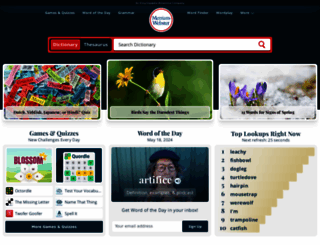Merriam-Webster: America's Most Trusted Dictionary
Page Load Speed
350 ms in total
First Response
28 ms
Resources Loaded
322 ms
Page Rendered
0 ms

About Website
Visit word.com now to see the best up-to-date Word content for South Korea and also check out these interesting facts you probably never knew about word.com
Find definitions for over 300,000 words from the most authoritative English dictionary. Continuously updated with new words and meanings.
Visit word.comKey Findings
We analyzed Word.com page load time and found that the first response time was 28 ms and then it took 322 ms to load all DOM resources and completely render a web page. This is an excellent result, as only 5% of websites can load faster.